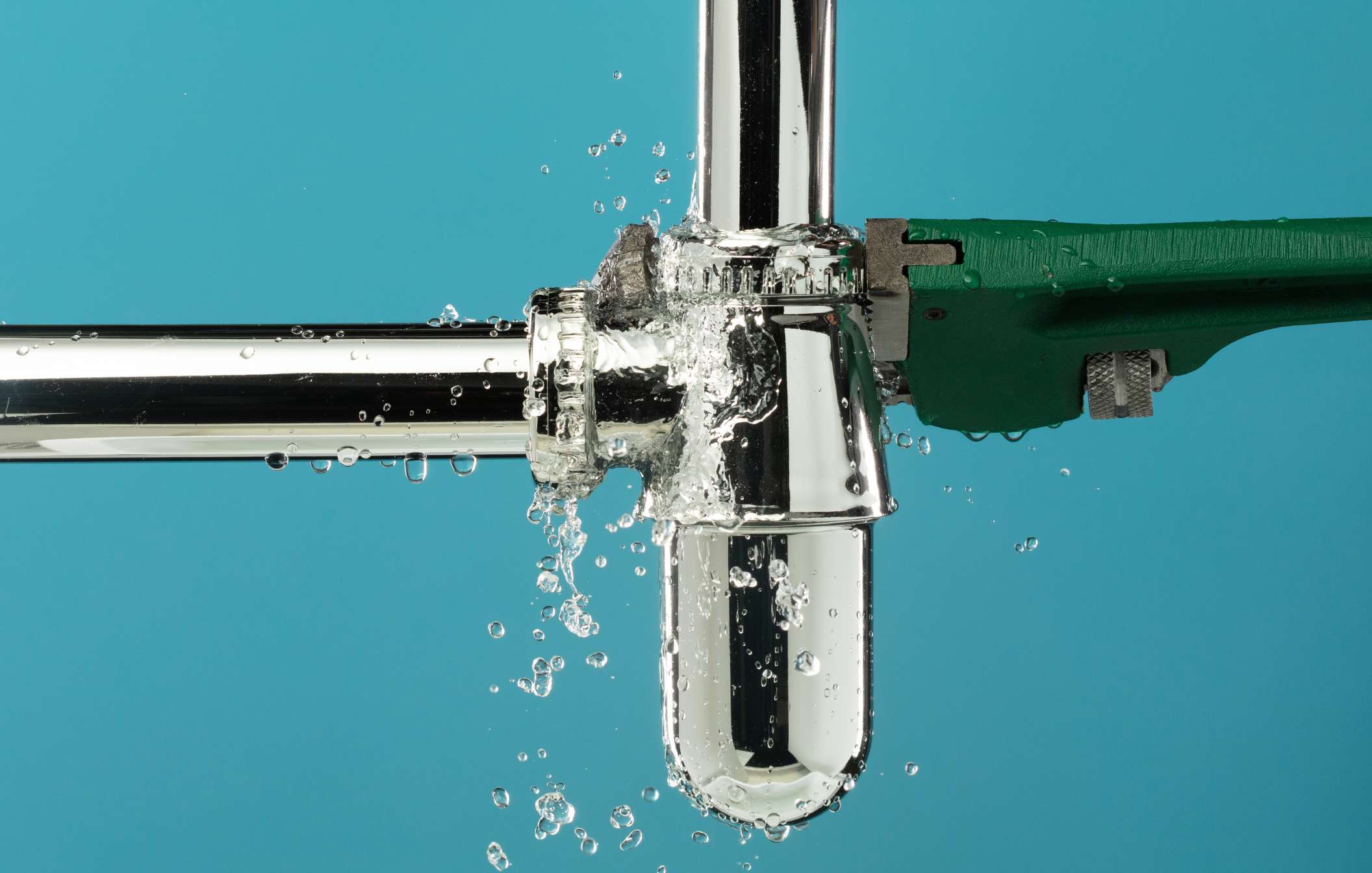Preventing water damage and reducing plumbing costs is essential for homeowners and property managers looking to maintain their properties efficiently. While plumbing issues can sometimes seem overwhelming, a proactive approach can save time and money in the long run.
By addressing minor repairs early, choosing cost-effective solutions, and practising regular maintenance, you can avoid expensive emergencies and keep your plumbing system in top shape. In this guide, we’ll learn practical tips to help you manage plumbing repairs, reduce water waste, and keep your home or property running smoothly.
Let’s get straight to the point.
To prevent water damage and reduce plumbing costs, homeowners and property managers can take a proactive approach by handling minor plumbing tasks, getting detailed quotes for larger jobs, using plumbers who offer warranties, and opting for cost-effective materials like PEX piping. Removing drywall before repairs and bundling multiple issues into one plumber visit can save money.
Detecting and fixing leaks promptly can prevent water waste, significantly increasing bills. Regular maintenance, such as checking for leaks and monitoring water use, helps avoid larger issues and reduces unnecessary water costs.

Tips To Save On Plumbing Costs
Reducing plumbing expenses can be straightforward if you take a proactive approach to maintenance and repairs. Many plumbing issues start small, and addressing them early can help you avoid more significant, costly repairs.
Here are some detailed tips on how to save on plumbing costs:
1. Handle Minor Plumbing Tasks Yourself
For those comfortable with basic DIY home repairs, taking on small plumbing tasks yourself can lead to significant savings. Simple tasks like clearing clogged drains, tightening leaky faucet handles, or replacing worn-out toilet parts are often manageable without a professional plumber.
Examples of small tasks you can do:
- Clearing blocked drains: A drain snake or a natural solution like baking soda and vinegar can often resolve minor clogs.
- Toilet maintenance: Regularly checking the flapper or handle mechanisms can prevent the toilet from running, often leading to wasted water and higher bills.
- Faucet repairs: Fixing leaky taps by replacing washers or O-rings often requires only some tools or expertise.
Addressing these minor issues yourself will save on labour costs and prevent larger problems from arising later.
2. Get Detailed Quotes Before Starting Work
Before any major plumbing work begins, always obtain a detailed quote from your plumber. A comprehensive quote will outline exactly what the job entails, the materials required, and the estimated labour cost.
This transparency allows you to plan your budget and avoid any surprise charges once the work is done.
What to look for in a detailed quote:
- Breakdown of material costs: Make sure you understand how much each part will cost and if there are more affordable alternatives.
- Labour costs: Ensure the quote reflects the plumber’s hourly rate and an estimate of the job’s duration.
- Additional costs: Be clear about potential extra charges, such as fees for emergency call-outs or after-hours work.
Reviewing quotes from multiple plumbers will allow you to compare prices and select the most cost-effective option without compromising quality.
3. Use Plumbers Who Offer Warranties
Whenever possible, hire plumbers who offer warranties on their work. A warranty gives you peace of mind that you won’t be hit with additional costs if something goes wrong shortly after the repair.
Plumbing warranties typically cover the artistry for a specified period—often between 6 months and a year—ensuring that if the repair doesn’t hold, the plumber will return to fix it at no extra charge. It’s a great way to protect yourself from recurring issues and ensure the job is done properly the first time.
4. Remove Drywall Yourself Before Repairs
Access to the pipes may require removing drywall in many plumbing repair jobs. Consider doing it yourself rather than paying a plumber for this preparatory work.
Removing and replacing drywall is relatively simple and can save you from paying for additional labour hours. How to safely remove drywall:
- Use a utility knife to cut along the edges of the area you need to remove.
- Carefully pull back the drywall to expose the plumbing, being cautious not to damage any pipes or electrical wiring behind the wall.
- After the plumbing work is complete, you can reinstall the drywall using plasterboard screws and patching compound to smooth the surface.
Taking on this part of the job yourself could save considerable money, especially if the repair involves extensive work behind walls.
5. Opt For Cost-Effective Materials Like PEX Piping
When it comes to larger plumbing jobs, such as repiping a house or installing new plumbing lines, the choice of materials can significantly impact the overall cost. Opting for PEX (cross-linked polyethylene) piping over traditional materials like copper can reduce material costs by up to half.
PEX is not only less expensive, but it is also highly durable, flexible, and resistant to corrosion. It can last anywhere from 30 to 40 years, making it a cost-effective long-term solution.
Benefits of PEX over copper piping:
- Cost: PEX piping is far cheaper to produce and install than copper.
- Durability: PEX doesn’t corrode like metal pipes and is less likely to develop pinhole leaks.
- Ease of installation: Its flexibility allows plumbers to bend it around corners and through walls, reducing the need for joints and fittings that could lead to leaks.
Choosing PEX or other budget-friendly materials can reduce the project’s overall cost without sacrificing quality or longevity.
6. Schedule Multiple Repairs In One Visit
If your home has several plumbing issues, having them all repaired in one visit is often more cost-effective. Plumbers typically charge a call-out fee, and you can avoid paying multiple fees by grouping repairs.
When the plumber is already on-site, they may offer a reduced rate for handling additional tasks. Common issues that can be fixed in one visit:
- Leaky faucets or showerheads
- Running toilets
- Slow-draining sinks
- Pipe inspections
Scheduling repairs this way maximises the plumber’s time and can lead to significant savings on labour costs.

How Much Water Do Leaky Fixtures Waste?
Even small leaks can waste significant amounts of water over time. For example, a faucet dripping at ten drops per minute wastes almost 1 gallon of water daily—29 gallons per month.
While this may not seem like much, it still adds unnecessary costs to your water bill. Faster leaks are even more problematic.
A faucet dripping at 120 drops per minute wastes 11 gallons of water daily, or 330 gallons a month, potentially adding $6 to your monthly bill. Toilets are another common culprit of water waste.
A running toilet can lose up to 8 gallons of water per hour, up to 200 gallons per day, and more than 6,000 gallons per month. If not addressed promptly, this could cost you as much as $70 per month in water bills.
Other Causes Of High Water Bills
Leaking fixtures are just one of the reasons for skyrocketing water bills. Inefficient water use habits also contribute to unnecessary costs:
- Running a half-full dishwasher wastes 320 gallons of water annually.
- Leaving the tap running while brushing your teeth wastes 8 gallons of water daily.
- Hand-washing dishes with the water running for 5 minutes wastes 10 gallons per use.
- Broken sprinkler heads can waste 2,400 gallons of water each month.
In addition to these inefficient practices, leaks can occur in areas like your refrigerator, dishwasher, or outdoor irrigation system. These often go unnoticed because the water may seep directly into drains or the ground, but they can still lead to costly damage and mould growth.
Water Leak Detection Tips For Homeowners
If you suspect a water leak in your home, here are a few simple tests you can try before calling a plumber:
- Watch the Water Meter: One of the easiest ways to detect a leak is to monitor your water meter. Turn off all water-using appliances and check if the meter is still moving. If it is, you likely leak.
- Check for Water Stains: Water leaks behind walls or under floors can sometimes be detected by looking for stains on walls or ceilings. If you spot any, contact a professional immediately.
- Inspect Outdoor Areas: Leaks in outdoor plumbing, such as irrigation systems or hose pipes, can waste significant amounts of water. Look for soggy patches in your yard or areas where water seems to be pooling.
Conclusion
In conclusion, preventing water damage and reducing plumbing costs is achievable with a proactive and informed approach. You can avoid costly repairs and water waste by tackling minor plumbing tasks, seeking detailed quotes, opting for cost-effective materials, and practising regular maintenance.
Simple measures like checking for leaks and using water efficiently protect your home and yield significant savings over time. With these strategies, homeowners and property managers can ensure their plumbing systems remain efficient, reliable, and affordable.
FAQs About Water Leaks
Does House Insurance Cover Water Leaks?
Most standard building and contents home insurance policies cover water leaks – often referred to as ‘escape of water’ in policy booklets. However, there are exclusions, so you should check your policy carefully.
Who Pays For Water Pipe Leak?
In most cases, it’s your responsibility to maintain the supply pipe. This is the section of the service pipe from the boundary of your property – usually where the water meter and stop valve are – into the property itself.
Is A Leak An Emergency?
If you see a leak in your house that’s large enough for you to, well, see it, then you’ve definitely got a plumbing emergency on your hands. Shut off the water main to your house (make sure to familiarize yourself with the location of the shut-off valve for just such as situation) and summon the expert plumbers.
How Common Are Water Leaks?
The average household’s leaks can account for nearly 10,000 gallons of water wasted every year and ten percent of homes have leaks that waste 90 gallons or more per day. Common types of leaks found in the home are worn toilet flappers, dripping faucets, and other leaking valves.
Can A Landlord Refuse To Do Repairs?
You can’t be forced to do repairs that are your landlord’s responsibility. If you damage another tenant’s flat, eg if water leaks into another flat from an overflowing bath, you’re responsible for paying for the repairs. You’re also responsible for paying to put right any damage caused by your family and friends.

